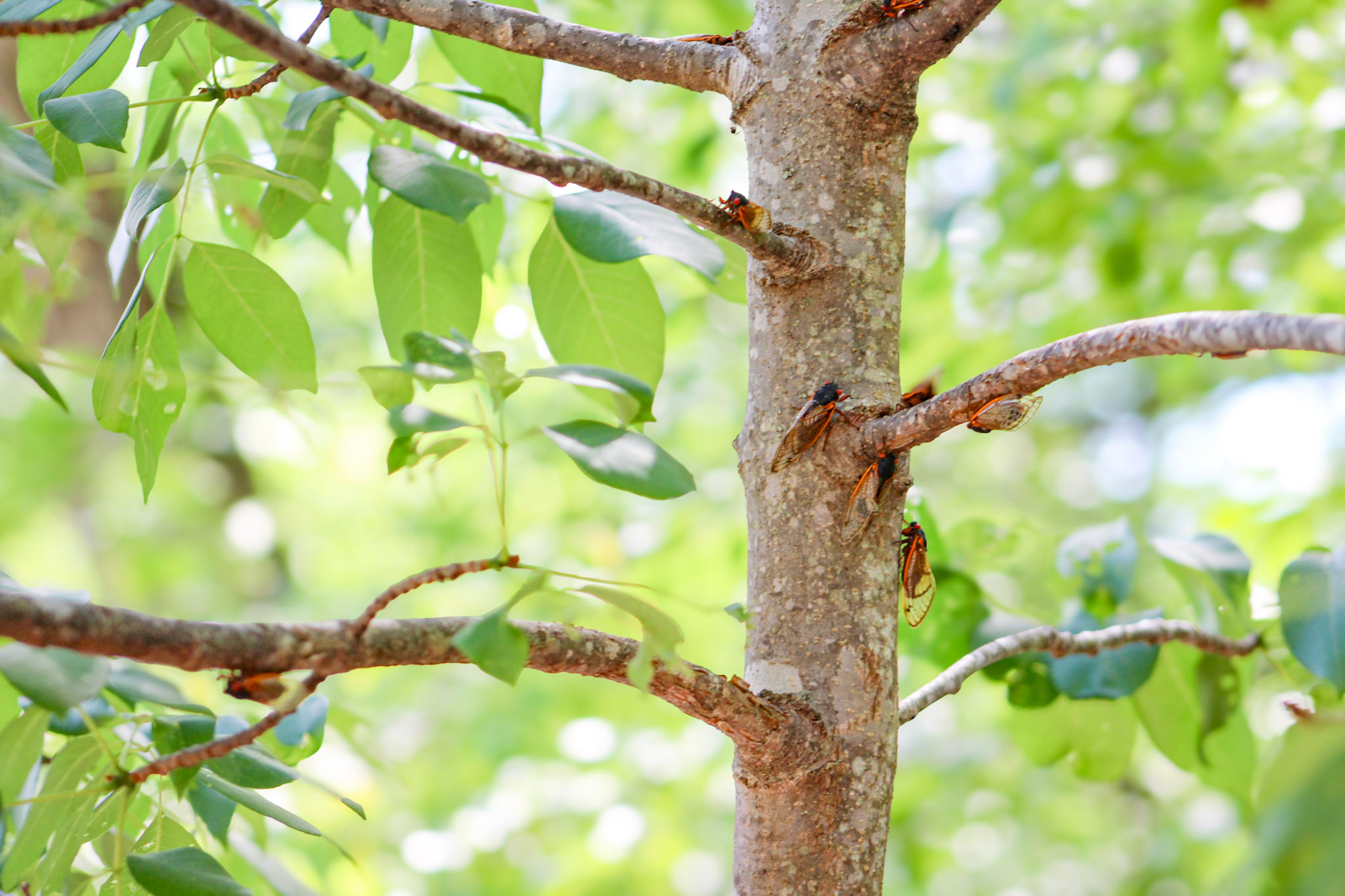Cape Girardeau narrowly misses a rare natural phenomenon
Hordes of flying insects have swarmed across large parts of Southeastern Missouri since early May. Soon, however, their numbers will begin to dwindle as the countless bugs begin to die off in mass.
Hordes of flying insects have swarmed across large parts of Southeastern Missouri since early May. Soon, however, their numbers will begin to dwindle as the countless bugs begin to die off in mass.
The SEMO campus and most of Cape Girardeau County did not witness the emergence of periodical cicadas.
Although the bugs didn’t appear on or around campus, there are many nearby sites to see the insects, according to the Missouri Department of Conservation (MDC) regional supervisor AJ Hendershott.
“Go to Lake Girardeau Conservation Area, or Bollinger Mill State Historic Site,” Hendershott said. “Those are public land sites that anyone is welcome from sunrise to sunset. Get on out there and you’re going to see and hear the periodical cicadas.”
The MDC website lists public land available to SEMO students and local residents.
There are two different types of cicadas: Periodical and annual. The annual cicadas emerge each year and are generally far less numerous. The periodical cicadas emerge every 13 to 17 years and can number in the billions, according to this National Geographic article.
Periodical cicadas are black with orange wings and red eyes, while annuals are black and green.
Cicadas spend most of their lives underground, only emerging when they’re ready to reproduce.
The rarity of periodical cicadas is why Hendershott urges people to go see them before they’re gone.
“This year we’ve had a total solar eclipse. We’ve had the northern lights visible in Southeastern Missouri. Go see the cicadas. It’s almost like a running list of what’s unique about 2024,” Hendershott said.
The cicadas swarming the forests near Cape Girardeau are part of Brood 17 and reemerge every 13 years.
According to SEMO chair of biology Timothy Judd, there is no danger to those who wish to experience the insects firsthand.
“They’re not going to bother you. They can’t hurt you. They won’t bite you. They just make noise,” Judd said.
Cicadas are not just interesting for people to observe; they’re helpful for the local environment, too.
“All of the sudden a buffet appears out of nowhere,” Judd said. "That’s good for a lot of animals. Birds are coming back to reproduce and it’s a nice source of protein to feed their young.”
Fish, mammals and even plants will all take part in the feast. Those adventurous enough can even find recipes to turn the bugs into a crunchy snack for themselves, Judd said.
While cicadas are harmless to people and pets, they can cause damage to young trees, Hendershott said.
Cicadas lay their eggs in tree bark. This isn’t an issue for older trees but can lead to significant damage to saplings.
“Essentially, it kills that end of the stem and the leaves that are there. So, if it’s a young tree, you can end up with significant damage,” Hendershott said.
Hendershott suggested planting new trees after the cicadas have died off and keeping track of cicada cycles.
The University of Connecticut maintains an interactive map that tracks the emergence of all periodical cicada broods in America. The next brood of periodical cicadas in Southeast Missouri is expected in 2028.
For Judd, the most fascinating aspect of cicadas is the way they make noise. He suggested watching this YouTube video to understand how the cicada makes noise.
The periodical cicadas are expected to remain until mid-July. Annual cicadas will emerge at the end of summer but are fewer in number.







